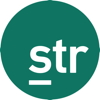

U.S. Performance
The U.S. hotel industry posted its second highest occupancy rate of the year at 67.2%. That level was just shy of the 2023 occupancy peak (67.5%), set during the week of 12-18 March. Occupancy jumped 3.0 percentage points (ppts) from the prior week (which included Easter Sunday) and 1.5 ppts year over year (YoY). Keep in mind, the matching week a year ago (17-23 April 2022) included Easter Sunday. Room demand (26.2 million room nights) was the highest for this specific week since daily reporting began in 2000, surpassing the previous record holder (2018) by more than 230,000 room nights.
Each day produced week-over-week (WoW) growth in both room demand and occupancy. Year-over-year gains were also seen on most days except Thursday through Saturday. The weekend produced a 3% drop in demand from last year. However, weekend (Friday & Saturday) occupancy was solid at 75.3%, with Friday’s level (74.2%) the best of the year. Weekday (Monday-Wednesday) occupancy reached 66.8%, the second highest level of the year.
Average daily rate (ADR) increased 4.2% YoY to US$156 and remained unchanged compared to last week. Revenue per available room (RevPAR) reached US$105, which was up 6.6% year over year and up 5% over last week due to the occupancy gain. Both measures were the highest on record for the week but on an inflation-adjusted basis, real ADR was the eighth best for the week with real RevPAR the sixth highest.
The week-on-week gains in industry room demand were led by the Top 25 Markets, which accounted for 54% of the week’s growth. Occupancy in the Top 25 Markets also reached its second highest level of the year at 74.2%, just 1.3 ppts off the 2023 peak of 75.5%. Top 25 ADR (US$189) and RevPAR (US$140) showed continued strength, increasing 6.1% and 11.5%, respectively, year over year.
Occupancy in all other markets increased slightly to 63.4%, up 0.5ppts WoW. Modest increases were seen in ADR (US$135) up 1.8% and RevPAR (US$84) up 2.4%.
Occupancy in the Top 25 Markets ranged from 82% in New York City to 61.0% in Detroit. New York had the nation’s highest occupancy among all markets, followed by Charleston and Las Vegas, where occupancy topped 80%. Occupancy was also strong in Orlando, Nashville and six other Top 25 Markets with occupancy north of 75%. In all, 20 of the Top 25 markets saw weekly occupancy exceed 70%, the most since mid-October 2022 and only the second time since the start of the pandemic that we have seen that many Top 25 Markets above 70%.
Weekday occupancy reached 74.1%, led by Nashville (81.9%), Washington, D.C. (81.2%) and New York (80.4%). The largest year-on-year gains was seen in Chicago, where occupancy increased 22ppts to 74.6%. Four of the Top 25 Markets (Los Angeles, Miami, San Francisco, and Tampa) saw weekday occupancy decrease from a year ago.
ADR increased for all Top 25 Markets except Miami (-18.0%), San Diego (-0.4%), and Tampa (-4.5%). These three markets also saw RevPAR declines along with Philadelphia (-3.3%) and Phoenix (-0.5%).
Group room nights were a major contributor to the week’s room demand gains, accounting for 55% of the week-on-week growth. Group demand among luxury and upper upscale hotels exceeded 2.21 million room nights, the third highest of the pandemic-era behind the weeks ending 24 September 2022 (2.28 million) and 22 October 2022 (2.27 million). Compared to the same week last year, there were 36.7% more group rooms sold, and group rooms for the week were well ahead of 2019.
Both the Top 25 Markets and the grouping of all others saw a significant increase in rooms sold. The Top 25 Markets experienced stronger group growth compared to all other markets, selling 40.5% more luxury and upper upscale rooms compared to last year while all other markets sold 31.7% more rooms. Markets seeing the strongest gains included Chicago (+127.4%), Minneapolis (+57.3%), Nashville (+62.6%), New York (+60.9%), Oahu (+75.6%) and Seattle (+120.7%).
Global Performance
Global occupancy, excluding the U.S., reached 67.7%, up 3.1 ppts from the previous week and almost 14ppts ahead of last year. Weekly ADR rose 19.3% YoY to US$141, resulting in a RevPAR (US$96) increase of more than 44% from last year.
Among the top 10 countries based on supply, occupancy was 71%, which was highest level since the start of the pandemic and up 17ppts YoY. The U.K. had the highest occupancy among the top 10 at 79.4% and was followed by Italy (76.3%). The largest year-over-year occupancy gain was seen in China (+30ppts), where occupancy topped 72.7%, down from its pandemic-era high a week ago (74.2%). Occupancy was also up sharply in Japan (+17.3ppts), and Germany (17.9ppts).
Outside the 10 largest supply countries, several islands posted occupancy above 75% over the past three weeks, including the Bahamas, Jamaica, Puerto Rico, and Curacao, along with two northern European countries, the Netherlands and Ireland.
Final thoughts
This was one of the best weeks in 2023 across the globe. Leisure travel remains stable, and group and transient business travel are improving. The Top 25 Markets continue to show strong performance while all other markets are normalizing. ADR remains firmly grounded with positive annual gains although the rate of ADR and RevPAR growth is moderating and will continue to do so.
Looking ahead
Performance next week is expected to be similar with stable leisure and stronger group and business transient. As we move closer to the summer season, leisure travel will strengthen, and group will moderate. Business transient travel is expected to continue improving. The next few weeks will be free of calendar shifts, and as we move toward the U.S.’s unofficial start of summer on Memorial Day, we will start to see leisure demand climb.
Global performance should continue pacing upward albeit at a less dramatic pace than at the start of the year due to the receding impact of the pandemic. The island countries may see performance slow as the weather warms and cooler markets become more attractive for leisure travel.